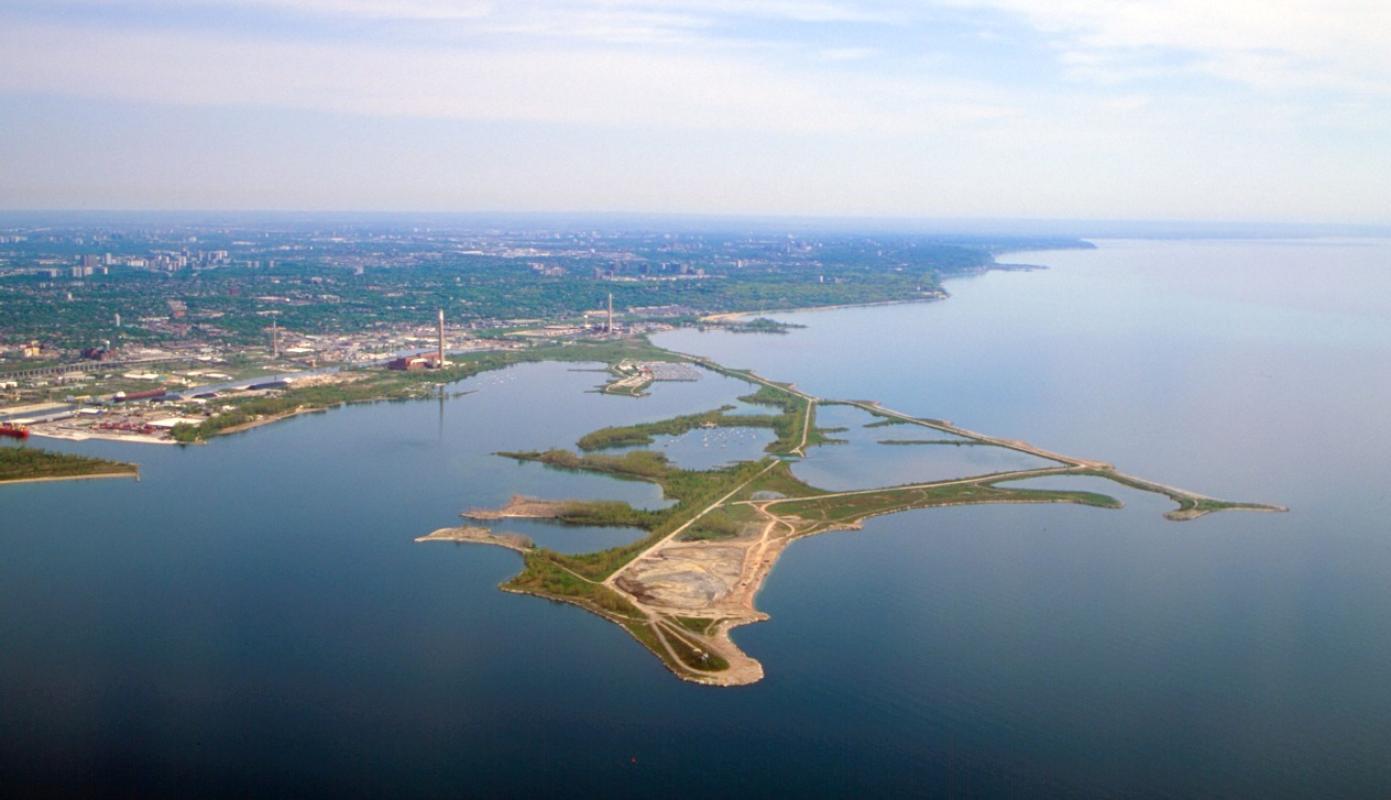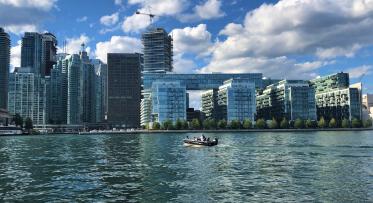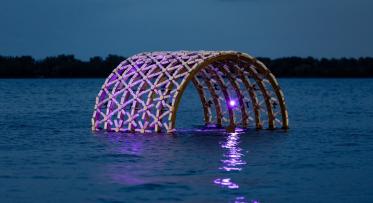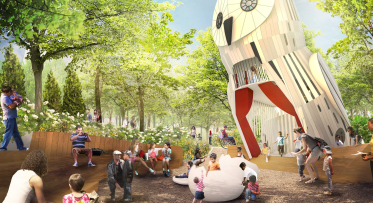Bird watching celebration marks improvements to Tommy Thompson park
May 11, 2013, Toronto, ON – Waterfront Toronto and Toronto and Region Conservation (TRCA), together with the Governments of Canada, Ontario and the City of Toronto celebrated the official opening of improvements to Tommy Thompson Park today as bird watchers gathered for the park’s annual Spring Bird Festival.
“Waterfront Toronto is pleased to be contributing to the improvement of one of the most important natural areas on the Great Lakes,” said Mark Wilson, Chair, Waterfront Toronto. “The improvements to Tommy Thompson Park help connect people with the lakefront to enjoy the beauty and wonder of this unique urban wilderness.”
Recognized globally as an Important Bird Area, Tommy Thompson Park has undergone significant natural area enhancements, as well as the construction of three small buildings that will support public gatherings, educational events and research. The park itself is located on a man-made peninsula, known as the Leslie Street Spit, which extends five kilometres into Lake Ontario and is over 500 hectares in size. With more than 300-plus bird species documented at the park and the spectacular sight provided by the annual monarch migration, over 250,000 people visit the park each year to enjoy the beauty of this unique urban gem.
“Our Government’s investment is helping to transform the waterfront into an area that is internationally recognized for its parks and open spaces, design excellence and sustainable development,” said the Honourable Jim Flaherty, Minister of Finance and Minister Responsible for the GTA. “This project will enhance the quality of life for people in the city and across the GTA.”
“We are proud to support the revitalization of Toronto’s waterfront,” said Glen Murray, Ontario Minister of Infrastructure. “These improvements to Tommy Thompson Park will benefit the community and the park’s plants and wildlife for decades to come.”
"Tommy Thompson Park is a great success story in turning our waterfront into a natural environment for residents to visit for recreation,” said Councillor Paula Fletcher, Ward 30, Toronto-Danforth. “These improvements will encourage more people to come to the park and enjoy all the waterfront has to offer."
The infrastructure components include the construction of a Staff Booth, an Environmental Shelter and an Ecological Research Station. The three small buildings emphasize an unobtrusive design and comply with the city’s bird-friendly development guidelines. The natural restoration and habitat improvements include 7.0 kilometres of new primary and secondary trails and 3.3 kilometres of new nature viewing trails, as well as aquatic habitat improvements with over 1.2 kilometres of shoreline restoration and 18.9 hectares of wetland habitat enhancements.
TRCA is an integral partner in the revitalization of Toronto’s waterfront and was responsible for the planning and construction of the park improvements.
“We are very excited that Phase I of the Tommy Thompson Park Master Plan has been completed. With strong partners like Waterfront Toronto, we will continue to make significant improvements to Toronto’s environment, making it a better place not only for plants and animals, but for park users as well,” said Brian Denney, CEO of Toronto and Region Conservation.
As with all Waterfront Toronto projects, sustainability was a key consideration when planning, designing and constructing the improvements at Tommy Thompson Park. They were designed to support the native ecology of the area, and include features that benefit residents as well as improve the local aquatic and terrestrial habitats. The buildings blend beautifully into their surroundings and the new trails and structures defer to the natural habitat, offering visitors opportunities to rest, interpret, interact with staff or take refuge from the elements.
Constructed by the Toronto Port Authority in 1959, Tommy Thompson Park represents millions of cubic metres of concrete, earth fill, dredged sand and construction waste. The park features wildflower meadows, cottonwood forests, coastal marches, cobble beaches and sand dunes. Wildlife, especially birds and butterflies, flourish at the park. Other recreational activities include hiking, cycling, rollerblading and fishing.
The Governments of Canada and Ontario and the City of Toronto created Waterfront Toronto to oversee and lead the renewal of Toronto’s waterfront. Public accessibility, design excellence, sustainable development, economic development and fiscal sustainability are the key drivers of waterfront revitalization.




